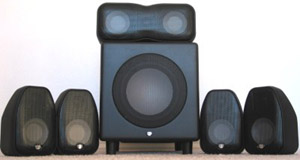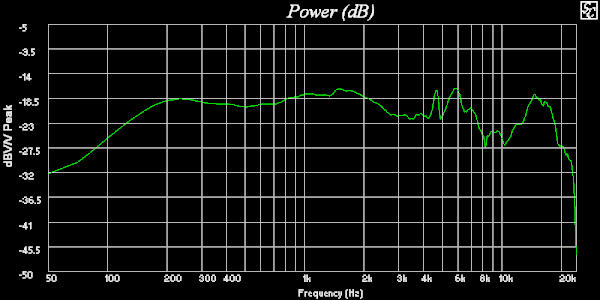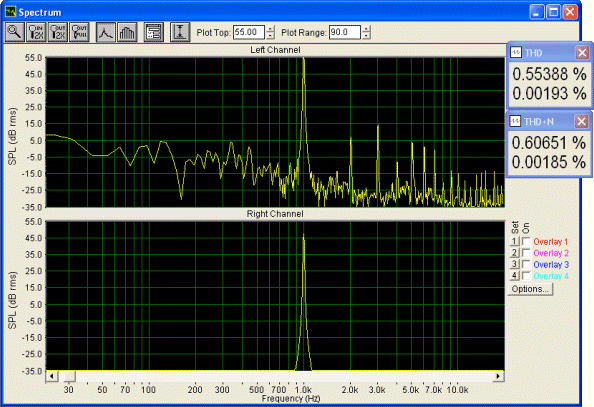|
||||||||||||||||||||||
|
Introduction Having listened to a much larger, and hence more expensive set of speakers from RBH, I was expecting very good quality sound, and great detail. The Compact Theater package did just that. Aesthetics A lot of people I know will knock on a speaker enclosure to see how well damped it is. With the RBH series you really can't do that, well at least without breaking a knuckle. The all metal enclosures have a painted black texture, giving them a subdued look. While not rosewood, they are sharp looking. The shape is similar to the Decos, a large plumb-shape, with the 4" mid-range driver casting a ghostly appearance through the grille. Listening For their size, these little speakers can rock. They really gave the impression of being much more than a tiny enclosure. It's hard to quantify the difference, but a metal enclosure does sound different than wood, and so does the composite in the Deco's case. It's not a bad difference, just a difference. I personally felt that rigid enclosures lead to more defined sounds, and it's pretty hard to get more rigid than metal. Sizewise, the RBHs were the second smallest in this group, but they sounded like the second largest. My only complaint while testing was that the center channel sounded much louder than the surrounds, and I had to adjust the gain on that channel. Then, I noticed that the center channel is 4 Ohms impedance, and the satellites are 8 Ohms, so I think this is the cause. Also of note was that it took a little more to play these
at sufficient volume than the rest of the speakers in this round-up. While most of the speakers in the round-up have a sensitivity in the 90s, the RBH have an 85 dB sensitivity, requiring a little more juice than the others. Again not a fault, but of notice if you have a 50 wpch receiver. The system had a very good THD mark of 0.55% (90 dB - 2"). Probably the best in this collection. I think that the all metal enclosures added to clean sound, after all there can be virtually no resonance from the enclosure (possibly high frequency ringing, but I didn't hear any). The system has good clarity and good definition. The 4" speakers rolled off a little early for my taste, but I had to remind myself of their size. The system needs a good sub, and RBH didn't fail there.
The sub that came with the review set had dual 8" drivers. Sound from the sub was clean and tight. Although the sub didn't play really loud, it was clean. It played the 35 Hz notes with decent authority, and was a good match for the system. As with most of these speakers sets, I had the sub crossed over higher than I usually would and placed it near the front of the listening position. Conclusions Overall the RBH system provided very clean sound and great aesthetics. I wonder how the metal enclosure
idea could apply to larger speakers. It's hard to tell how much the unique enclosure contributed to the sound, but cool none the less. Out of the smaller speakers in the review, I am impressed with these
just about the most. You get more than what you pay for.
- Brian
Weatherhead -
|
||||||||||||||||||||||






